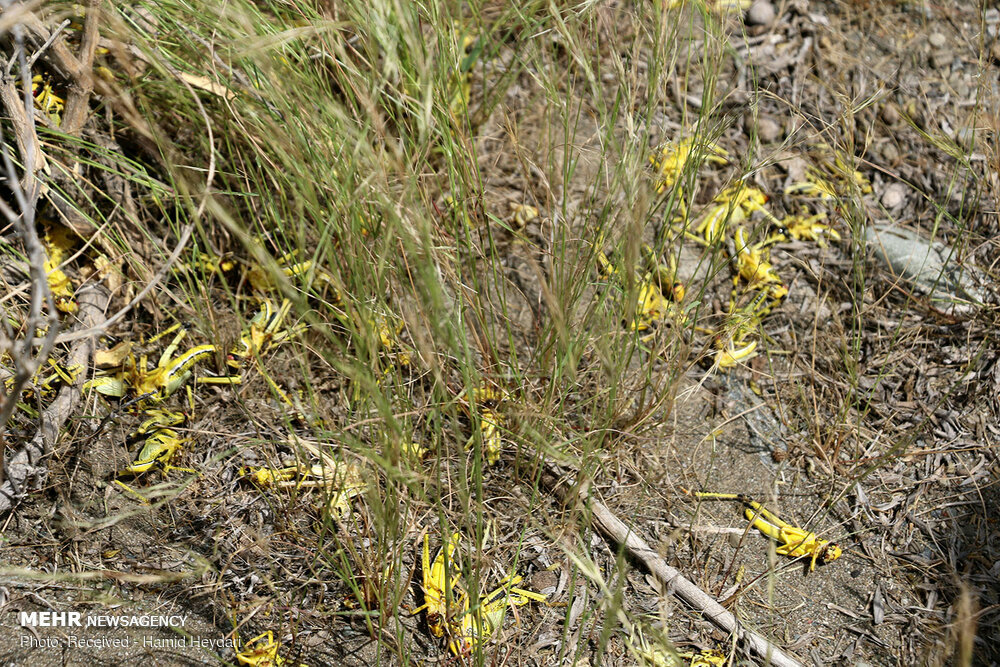140 swarms of desert locusts eradicated in southeastern Iran

TEHRAN – Desert locust breakout contained in 400,000 hectares of lands and some 140 swarms have been eradicated, Esmaeel Najjar, head of Iran’s Crisis Management Organization has said.
Desert locusts from Saudi Arabia have so far penetrated into the provinces of Bushehr, Fars, Hormozgan, Kerman, Khuzestan, and Sistan–Baluchestan, which resulted in major losses on farming lands and gardens.
The responsible bodies to fight the swarms hitting agricultural lands are Iran Plant Protection Organization as well as Agriculture Ministry, while the situation is exacerbated all the related organizations must cooperate, he further highlighted, Fars news agency reported on Saturday.
So far, vast aerial and ground pest control operations have been carried out by national authorities since past 4 months, which have resulted in eradication of 140 swarms, he added.
He went on to say that some 100 billion rials (nearly $2.3 million) have been earmarked to control the pest outbreak, and another budget amounting to 200 billion rials (nearly $4.6 million) is also allocated to completely eradicate them.
It is anticipated that another outbreak of the pests will occur the country in next 12 days, he warned
Desert locusts are short-horned grasshoppers that can form large swarms and pose a major threat to agricultural production, livelihoods, food security, and the environment and economic development.
FAO explains that adult locust swarms can fly up to 150 km a day with the wind. Female locusts can lay 300 eggs within their lifetime while an adult insect can consume roughly its own weight in fresh food per day - about two grams every day. A very small swarm eats the same amount of food in one day as about 35,000 people and the devastating impact locusts can have on crops poses a major threat to food security, especially in already vulnerable areas.
During quiet periods (known as recessions) desert locusts are usually restricted to the semi-arid and arid deserts of Africa, the Near East and South-West Asia that receive less than 200 mm of rain annually. This is an area of about 16 million square kilometers, consisting of about 30 countries.
According to a report updated on May 3, FAO announced that during the past few weeks, the desert locust situation has intensified in the traditional spring breeding areas of Iran and Saudi Arabia.
FB/MQ/MG
Leave a Comment